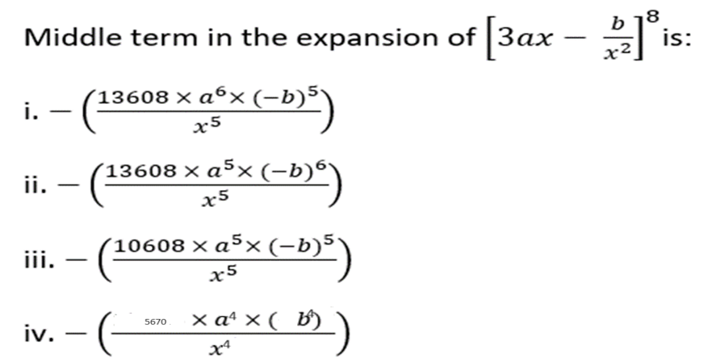Question
How many female members are there in family of ten
members? Statement I: Z is only son of Y, who is son-in-law of B. W is only daughter of C. L is sister-in-law of P. B is brother-in-law of A, who is sister of C. X is brother of W. L is married to B. W is mother of P and is mother-in- law of L. Only three married couples are there in family. A and P unmarried members of the family. Statement II: L is son of Z and is son-in-law of X. W is only son of C, who is married to B. R is only son of Y. B is sister of A. P and R are siblings. L is brother-in-law of R. A and R are unmarried member of family. Y is brother-in-law of W. Each of the questions below consists of a question and two statements numbered I and II given below it. You have to decide whether the data provided in the statements are sufficient to answer the question:Solution
We have: X is brother of W and W is only daughter of C. B is brother-in-law of A, who is sister of C, as A is unmarried member of family, that means B is married to C. Based on above given information we have: Clearly, only five female member are there in the family. Hence, statement I is alone sufficient. From Statement II:We have: L is son of Z and is son-in-law of X. L is brother-in-law of R, as R is unmarried member of the family. P and R are siblings. R is only son of Y, that means X is married to Y and P is married to L. Y is brother-in-law of W. W is only son of C, who is married to B, that means W is brother of X. B is sister of A, that means C is father of W. Based on above given information we have:
Clearly, gender of A and Z is not known. Hence, statement II is not sufficient.
If the sum of the coefficients in the expansion of (a + b)n is 16384, then the greatest coefficient in the expansion is

The perimeter of a rectangular field is 34 metres and its area is 60 m2 . What is the length of the diagonal of this field?
If the sum of the coefficients of all even powers of x in the product (1 + x + x2 + … + x2n) (1 – x + x2 – x...
A certain number of books were distributed equally among a group of students in a class. Each student received a number of books equal to one-fifth of t...

Find the coefficient of x⁴ in (2x – 3/x)⁶.

Find both the maximum value and the minimum value respectively of 3a4 minus; 8a3 + 12a2 minus; 48a + 25 on the interval...


